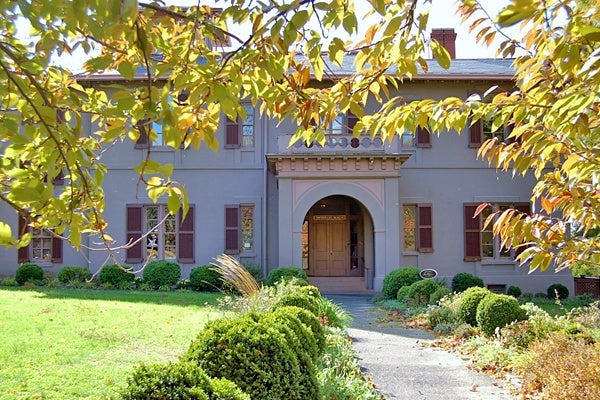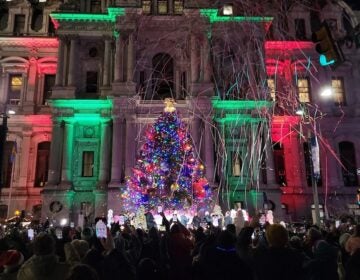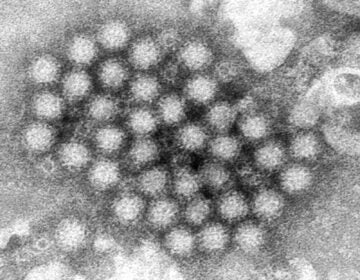Open house tour to showcase the great architecture of Mercer County
This is part of a series from Ilene Dube of The Artful Blogger.
From Colonial and Federalist times through the Greek Revival, Industrial and Modernist periods, Mercer County is rich with magnificent architecture.
To commemorate its 175th anniversary, the county, in partnership with Preservation New Jersey, is presenting a day-long symposium, Mercer by Architecture, August 9, on the campus of the Lawrenceville School, followed by a weekend highlighting nearly 40 buildings. A brochure for the August 10 and 11 open buildings is available on the Mercer175 website.
One of the oldest sites is the William Trent House. Visitors to Trenton can also see Ellarslie Mansion in the middle of Cadwalader Park, the historic Old Barracks, and the New Jersey State House and Annex.
“There are beautiful mansions and historic farmsteads including the Phillips House at Howell Living History Farm, the Robbins House in Robbinsville, Kuser Mansion in Hamilton, and the Schenck Farmstead in West Windsor,” said Tricia Fagan, the county’s historic outreach specialist.
The Hopewell train station and some of the county’s oldest places of worship are also opening their doors.
Not only is Mercer County rich with historic structures like the colonnades at Princeton Battlefield Park and state-of-the-art Princeton University buildings such as Frank Gehry’s Lewis Science Library, but it has also been home to world-class architects, from Robert Gettys to Michael Graves. The day-long symposium will feature prominent historians and architects including Graves, Michael Mills, Philip Hayden and J. Robert Hillier.
Among some of the buildings that will be highlighted at the symposium and on the tour:
The Trenton Bath House — Designed by Louis Kahn,it is neither in Trenton (it’s in Ewing) nor a bath house. The changing area for a Jewish Community Center pool was listed on the National Register of Historic Places in 1984. Architectural historians come from all over the world to study its cruciform design.
This simple concrete structure is one of Kahn’s earliest public buildings and Kahn wrote, later, how he found his voice in this building. It was here that he first articulated his notion of “served” and “servant spaces”: Servant spaces make the building work, such as stairs, entryway and bathrooms, and served spaces are those that actually get utilized, such as the dressing rooms and the clothing storage.
Trent House — William Trent built his country estate north of Philadelphia, in New Jersey, at the falls of the Delaware River in 1719. It was a large, imposing brick structure, built in the newest fashion. An allee of English cherry trees led from the entrance down to the ferry landing. In 1720 Trent laid out a settlement, which he incorporated and named “Trenton.”
After extensive restoration, the Trent House opened as a museum in 1939. Today it is owned and operated by the City of Trenton with the assistance of the Trent House Association. The structure is listed on both the State and National Registers of Historic Places and was declared a National Landmark by the United States Congress.
Morven — A National Historic Landmark and former New Jersey Governor’s Mansion, Morven was home to one of the signers of the Declaration of Independence and has played a role in the history of New Jersey and the nation for more than 250 years. Richard Stockton (1730-1781) built Morven in the 1750s on land granted to his grandfather by William Penn in 1701. After a fire in 1758, the home was rebuilt and christened Morven (“big mountain” in Gaelic) by Richard’s wife Annis Boudinot Stockton.
A comprehensive renovation of Morven began in 1999. Today, Morven Museum & Garden showcases the rich cultural heritage of the Garden State through regular exhibitions, educational programs and special events.
Kuser Mansion — Rudolph Kuser immigrated to the U.S. from Zurich, Switzerland, around the mid 1800s. With his wife Rosalie he bought and operated a large farm in Hamilton Township, along what is now Kuser Road. Across the road from this farm their son, Fred, built the Kuser Farm Mansion as a summer home.The Fox Film Company, later to merge with 20th Century, was started with a $200,000 loan from Anthony R. Kuser, and family members went on to become major stockholders. The Kuser legacy includes High Point State Park and the New Jersey Audubon Society. Today visitors can enjoy a tour of the mansion and accompanying buildings.
Prospect House – Today a private dining club serving the faculty and staff at Princeton University, the Italianate Victorian mansion was built circa 1850 by American architect John Notman. It is one of the few University buildings not originally part of the campus.
Prospect House owes its name to the stone farmhouse first constructed on the site in the mid-18th century by Colonel George Morgan. The eastern view from that farmhouse prompted Colonel Morgan to name his estate “Prospect.” When Prospect was acquired in 1849 by John Potter, a wealthy merchant from Charleston, South Carolina, he replaced the colonial structure with the present mansion. In 1878 Robert L. and Alexander Stuart of New York bought the house and accompanying 35-acre estate and deeded it to Princeton University, known at that time as the College of New Jersey.
Beginning in 1879, the house served as a home for Princeton University’s presidents. James McCosh, its first resident, thought the house was the finest in the world for a college president and that its grounds were like Eden.
Ellarslie Mansion – Also designed by John Notman, the Italianate villa was built for Henry McCall Sr. of Philadelphia as a summer residence in 1848. Notman, known for designing the first Italianate building in America in Burlington, New Jersey, and the first Renaissance Revival building, the Athenaeum, in Philadelphia, was locally recognized for also designing the 1845 expansion of the New Jersey State House and Prospect House (above).
In 1888, the City of Trenton acquired the property and the surrounding 80 acres, which would become Cadwaladar Park, designed by father of American landscape architecture Frederick Law Olmsted.
The City of Trenton opened the first museum here in 1889, closing several years later. Ellarslie has been a restaurant, ice cream parlor and monkey house. In 1971 renovations began to create the Trenton City Museum, opened in 1978. Ellarslie Mansion is included in the National Register of Historic Places.
____________________________________________________________
The Artful Blogger is written by Ilene Dube and offers a look inside the art world of the greater Princeton area. Ilene Dube is an award-winning arts writer and editor, as well as an artist, curator and activist for the arts.
WHYY is your source for fact-based, in-depth journalism and information. As a nonprofit organization, we rely on financial support from readers like you. Please give today.








